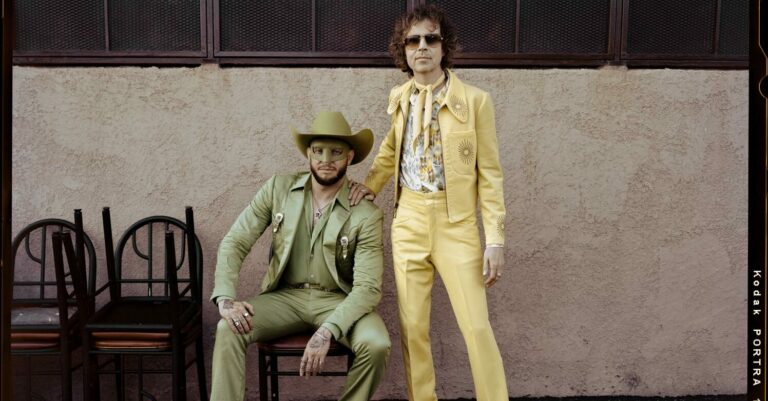The lives of every individual are shaped by the experiences they have had in the past. Hence, mental illnesses are also largely a result of the traumatic experiences one has gone through during the early or later stages of their life. Therefore, finding the right solution to overcome trauma is very important to improve the overall quality of life.
One such solution is trauma-informed care, which focuses on identifying the root cause of the problem and addressing the issue holistically. If you live in California, finding a reliable trauma-informed care center is relatively easy. Numerous facilities provide trauma therapy in Orange County and can help you improve the quality of your life. To learn more about the process and how it can help you, refer to the article below:
Understanding Trauma-Informed Care:
Before going through trauma-informed care, let us understand what trauma is. Well, there is not one definitive definition of trauma, and it can mean different things to different individuals. So, what may be traumatic for one individual might not be for another. However, according to the medical definition, trauma means a situation that exposes an individual to an actual or threatened event that involves death, serious injury, or sexual violence. Now, to tackle the repercussions of trauma, one must enroll in trauma-informed care.
Unlike other therapy that focuses on the individual’s behavior, trauma-informed care looks into the events and circumstances that are causing this behavior.
The foundation of trauma-informed care lies in the following principles:
- Every individual who is currently suffering from a mental illness has gone through a trauma at some point in their lives.
- Trauma leaves a lifelong impact.
- Trauma impacts the victim’s relationship with their loved ones.
- Trauma is one of the most important factors for distress in an individual’s life.
Techniques Used in Trauma-Informed Care:
Trauma-informed Care doesn’t rely on one specific therapy. Rather, it concentrates on a combination of therapies that are tailored according to the past experiences, current behavior, triggers and other specific needs.
Therapists who specialize in trauma-informed Care concentrate on the following areas during their practice:
- Making the patient feel safe: Individuals suffering from trauma have deep-rooted fear in their minds. Therefore, the therapist’s first priority is to make the patient feel physically and emotionally safe during their sessions.
- Enabling patients to actively participate in the treatment: Trauma-informed care highly relies on the patient’s active participation. Therefore, by constantly informing them about what is happening, educating them about their condition, and encouraging them to actively participate in the process, these sessions help victims gain a sense of control over their lives.
- The therapy process is transparent. Unlike other therapies, in which the patient is not well informed about the due course of action undertaken, in trauma-informed care, the patient is constantly kept in the loop, thus maintaining a standard of transparency.
How Can Trauma Informed Care Help?
Trauma-informed care helps improve the quality of an individual’s life and assists them in overcoming trauma that they may have faced during their childhood or as an adult. Even though the treatment is for trauma, the approach highly focuses on making the victim feel emotionally and physically safe in their present environment. Moreover, trauma-informed care also aims to address the guilt and shame that many trauma survivors go through and helps them lead a normal life.
Additionally, people who have experienced trauma in their lives mostly have a scarred relationship with their loved ones where they are unable to open themselves and be vulnerable. So, a major portion of this therapy also focuses on mending the relationship between the victim and their close ones, helping them trust others.
Conclusion:
Individuals who have experienced trauma in their childhood or adult lives have difficulty leading a normal life. Moreover, the therapies that are popularly used to deal with trauma focus on dealing with the current behavior of the victim rather than identifying the root cause. However, this is not the case with trauma-informed care.
In this therapy, the therapist digs deep into the reasons and makes the victim feel safe and comfortable, which helps them address the problems more accurately. So, if a past event is impacting the quality of your life or hampering your social and professional relationships, you may consider trauma-informed care as a solution.






 Clairo is back with her third studio album,
Clairo is back with her third studio album,  Cassandra Jenkins has released a new album,
Cassandra Jenkins has released a new album,  Remi Wolf has dropped her sophomore album,
Remi Wolf has dropped her sophomore album,  Sturgill Simpson has put his first album under the moniker Johnny Blue Skies,
Sturgill Simpson has put his first album under the moniker Johnny Blue Skies,  Eminem has dropped The Death of Slim Shady (Coup de Grâce), his first studio LP since 2020. The follow-up to 2020’s Music to Be Murdered By was promoted with the singles ‘Tobey’ and ‘Houdini’. The Detroit rapper teased the album with an obituary for his alter ego, Slim Shady, in the May 13 issue of the Detroit Free Press newspaper. “Ultimately, the very things that seemed to be the tools he used became calling cards that defined an existence that could only come to a sudden and horrific end,” the eulogy read. “His complex and tortured existence has come to a close, and the legacy he leaves behind is no closer to resolution than the manner in which this character departed this world.”
Eminem has dropped The Death of Slim Shady (Coup de Grâce), his first studio LP since 2020. The follow-up to 2020’s Music to Be Murdered By was promoted with the singles ‘Tobey’ and ‘Houdini’. The Detroit rapper teased the album with an obituary for his alter ego, Slim Shady, in the May 13 issue of the Detroit Free Press newspaper. “Ultimately, the very things that seemed to be the tools he used became calling cards that defined an existence that could only come to a sudden and horrific end,” the eulogy read. “His complex and tortured existence has come to a close, and the legacy he leaves behind is no closer to resolution than the manner in which this character departed this world.” Cigarettes After Sex have returned with a new LP,
Cigarettes After Sex have returned with a new LP,  Austin quintet Font have released their debut album,
Austin quintet Font have released their debut album,  Vol. III is the latest album by Webbed Wing, the Philadelphia band featuring Superheaven’s Taylor Madison on vocals and guitar and Jake Clarke on drums, plus Mike Paulshock on bass. The follow-up to 2021’s What’s So Fucking Funny? was produced by Will Yip and is out via his label
Vol. III is the latest album by Webbed Wing, the Philadelphia band featuring Superheaven’s Taylor Madison on vocals and guitar and Jake Clarke on drums, plus Mike Paulshock on bass. The follow-up to 2021’s What’s So Fucking Funny? was produced by Will Yip and is out via his label  Jake Xerxes Fussell has issued a new album,
Jake Xerxes Fussell has issued a new album,  Chris Cohen has released
Chris Cohen has released 




